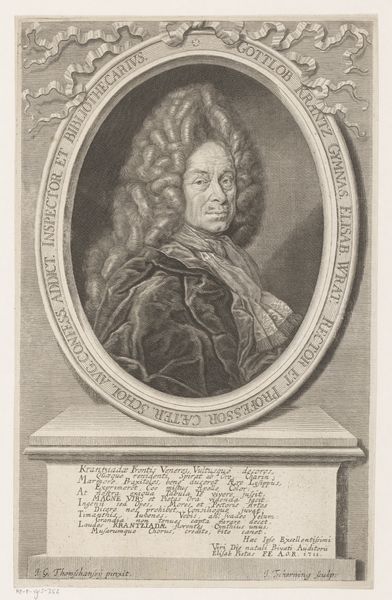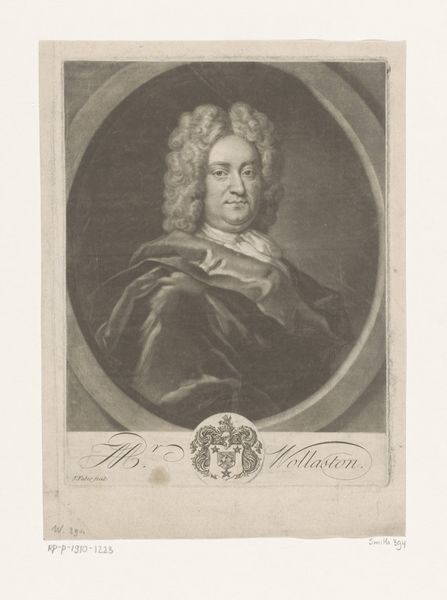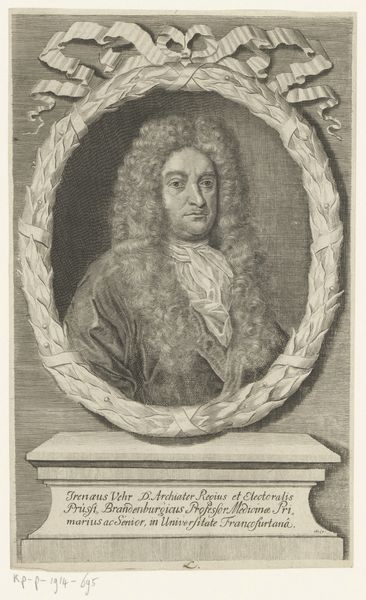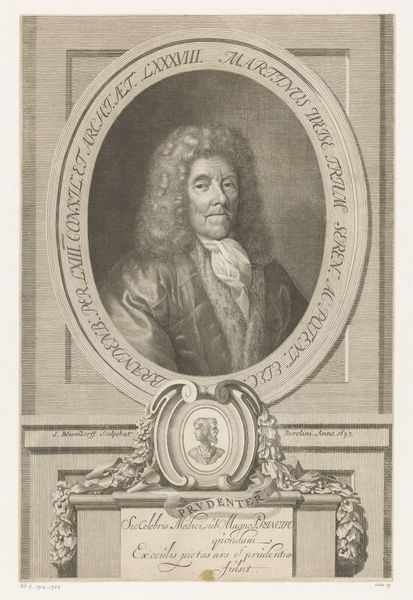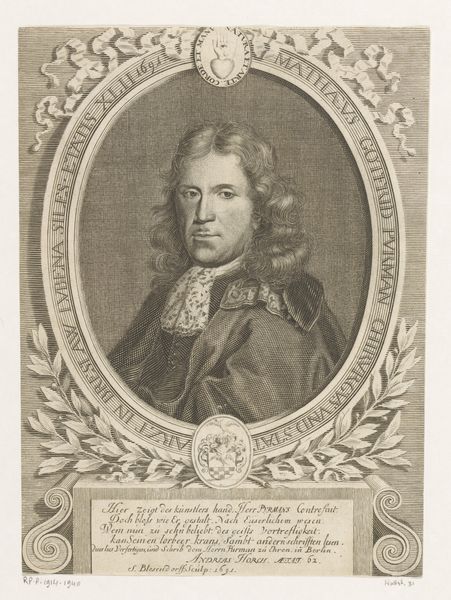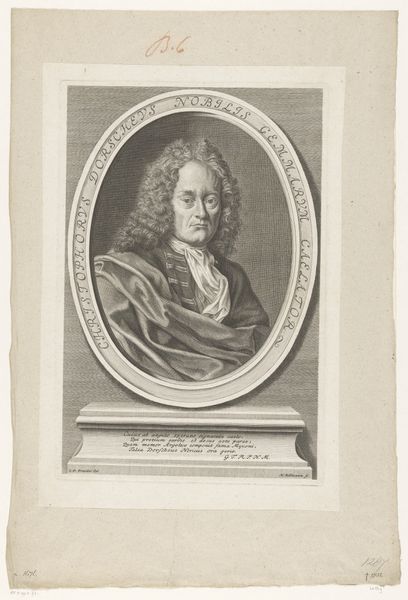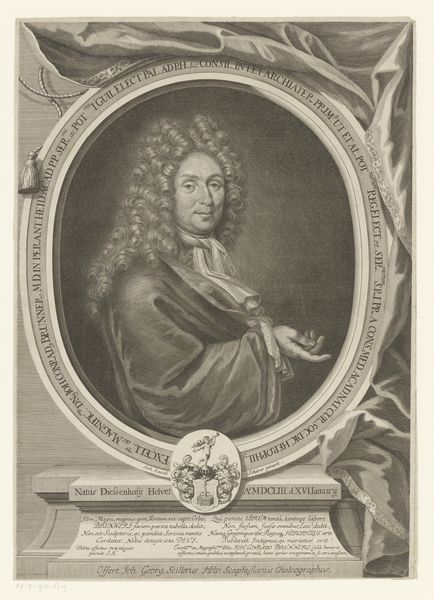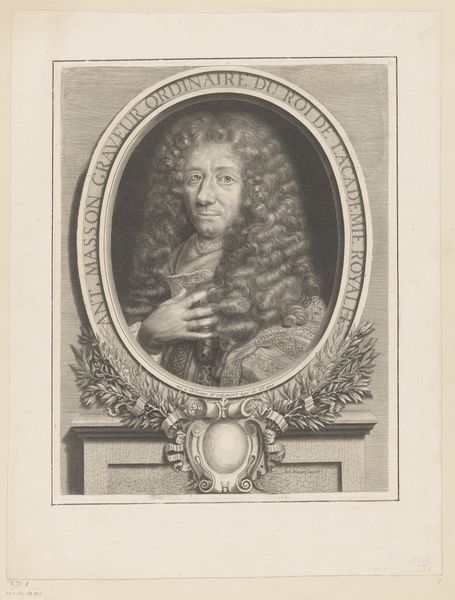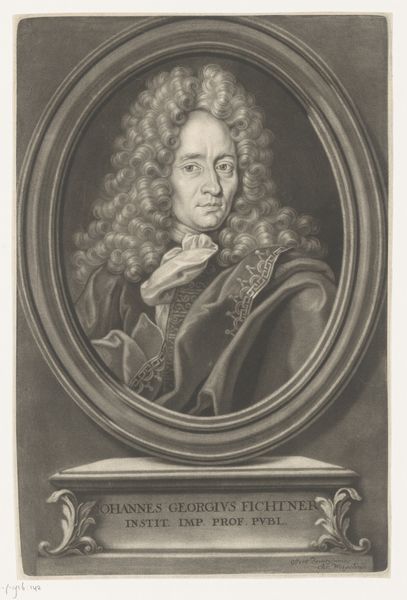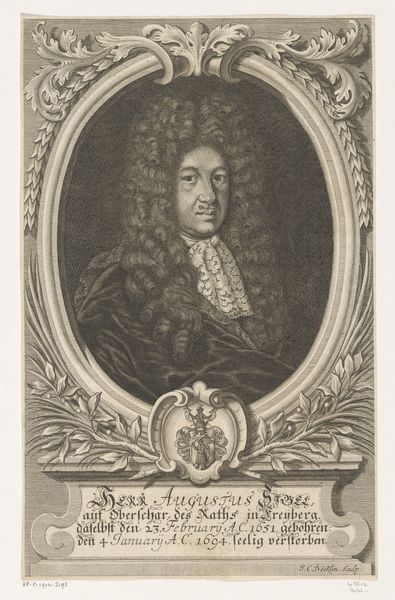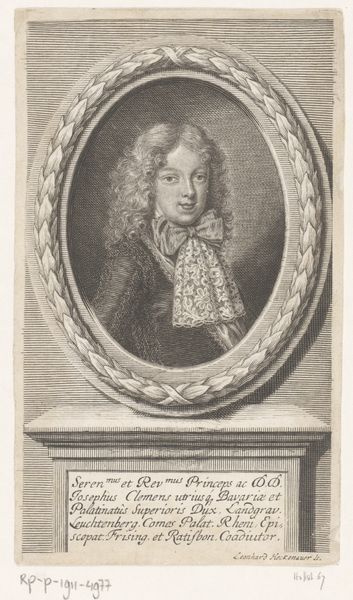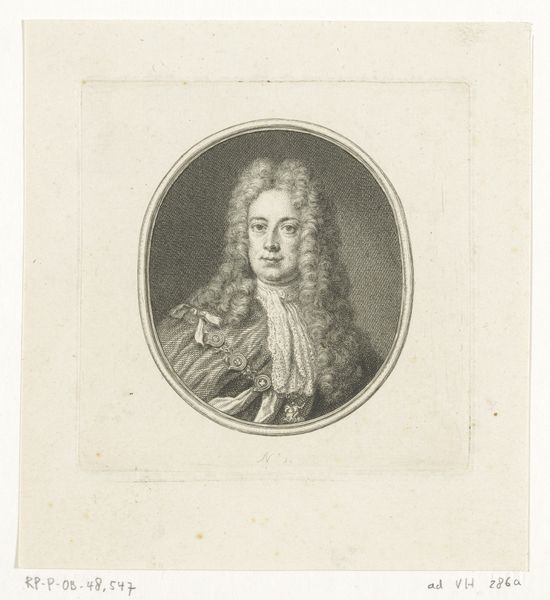
print, metal, engraving
#
portrait
#
baroque
# print
#
metal
#
old engraving style
#
historical photography
#
portrait reference
#
framed image
#
line
#
engraving
Dimensions: height 306 mm, width 208 mm
Copyright: Rijks Museum: Open Domain
Editor: This engraving, "Portret van Daniel Ludolph, Freiherr von Danckelman" created in 1698, is quite striking. It is crafted from metal, presenting Daniel Ludolph in such detail. The lines and Baroque style give a real sense of importance, even power. How would you interpret this work, especially considering it's a print? Curator: Well, first, notice the meticulous detail achieved through the engraving process. Each line meticulously etched, contributing to the final image. Think about the labour involved in creating such a work; this isn't a quick sketch. How does understanding this labor, this *material* investment, affect your interpretation of the subject, Daniel Ludolph himself? Editor: I see your point! The precision makes it feel more calculated, almost manufactured to convey a particular image, not just a likeness. Like, it becomes less about *him* and more about what he represents. Curator: Exactly! It speaks to the production of identity during this period. The engraving isn't just about portraying a man; it's about constructing and disseminating a specific image of power and authority. Look at the lettering that wraps the oval - consider print's capacity for repeatability, which is an act of mechanical reproduction serving as its method. Does this suggest a wider audience than, say, a single painted portrait hung in a private home? Editor: Definitely! It feels like propaganda almost, mass-produced for a wider audience to establish social standing. It makes you think about the relationship between power, representation, and the consumption of images back then. Curator: Precisely. What have we learned then? It is not only a portrait of a man, but of a period; it is representative of consumption and labour, through which it gains meaning. Editor: I will certainly never look at old portraiture the same way again!
Comments
No comments
Be the first to comment and join the conversation on the ultimate creative platform.
